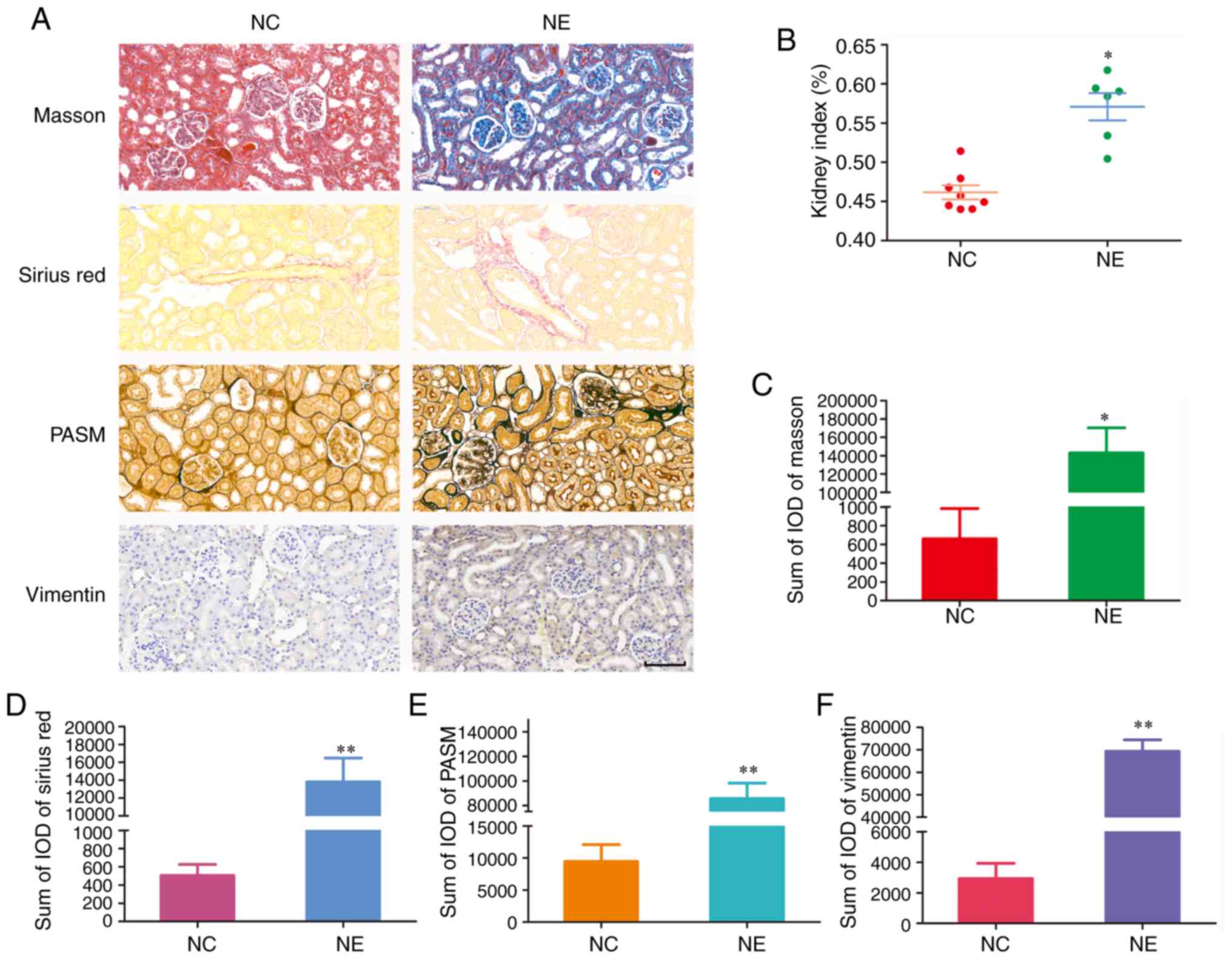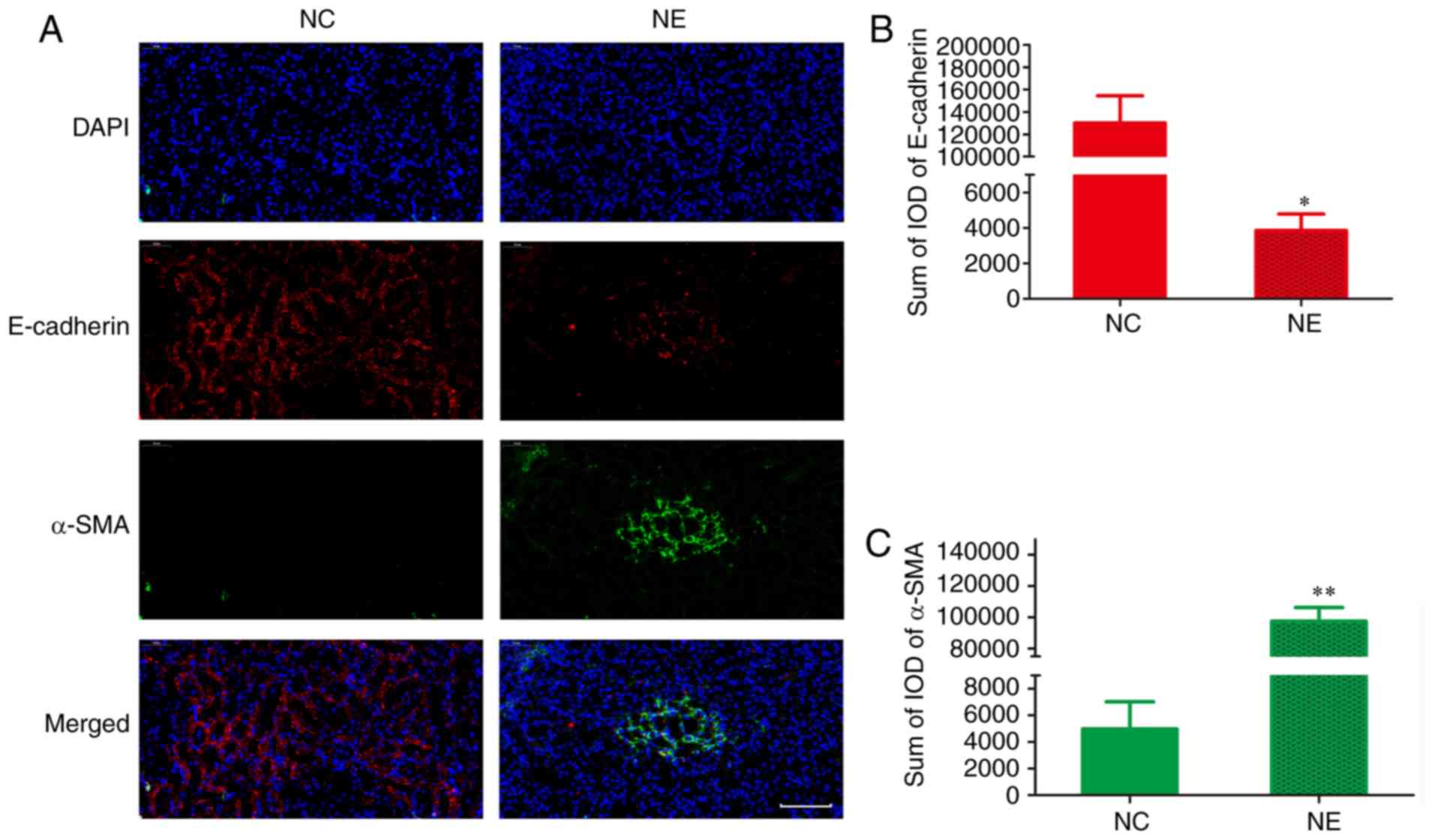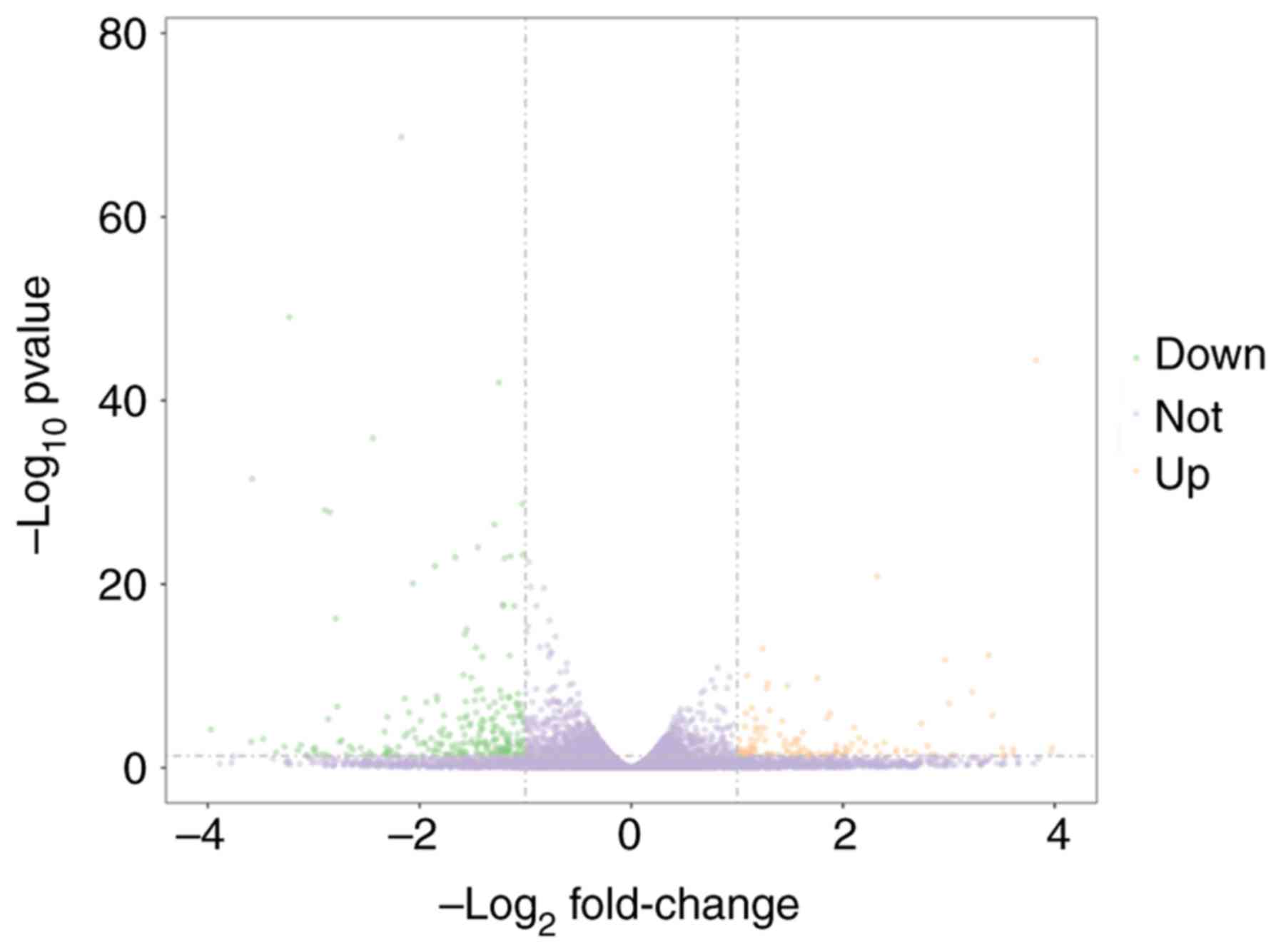|
1
|
Yoshida T, Nakanishi K, Yoshioka T,
Tsutsui Y, Maeda A, Kondo H and Sako K: Oral tacrolimus oil
formulations for enhanced lymphatic delivery and efficient
inhibition of T-cell's interleukin-2 production. Eur J Pharm
Biopharm. 100:58–65. 2016. View Article : Google Scholar : PubMed/NCBI
|
|
2
|
Maguire O, Tornatore KM, O'Loughlin KL,
Venuto RC and Minderman H: Nuclear translocation of nuclear factor
of activated T cells (NFAT) as a quantitative pharmacodynamic
parameter for tacrolimus. Cytometry A. 83:1096–1104. 2013.
View Article : Google Scholar : PubMed/NCBI
|
|
3
|
Dong QE, Fu R, Liu CY, Ruan EB, Wang XM,
Wang GJ, Qu W, Liu H, Wu YH, Song J, et al: Inhibitory effects of
tacrolimus on effector T cells from patients with severe aplastic
anemia. Zhonghua Yi Xue Za Zhi. 93:1541–1545. 2013.In Chinese.
PubMed/NCBI
|
|
4
|
Wang DD, Chen X and Li ZP: Efficacy and
safety of tacrolimus in treating pediatric refractory nephrotic
syndrome: A meta-analysis. Int J Clin Exp Med. 11:6436–6444.
2018.
|
|
5
|
Ho S, Clipstone N, Timmermann L, Northrop
J, Graef I, Fiorentino D, Nourse J and Crabtree GR: The mechanism
of action of cyclosporin A and FK506. Clin Immunol Immunopathol.
80:S40–S45. 1996. View Article : Google Scholar : PubMed/NCBI
|
|
6
|
Masuda S and Inui K: An up-date review on
individualized dosage adjustment of calcineurin inhibitors in organ
transplant patients. Pharmacol Ther. 112:184–198. 2006. View Article : Google Scholar : PubMed/NCBI
|
|
7
|
Wang D, Chen X and Li Z: Treatment of
patients with systemic-onset juvenile idiopathic arthritis with
tacrolimus. Exp Ther Med. 17:2305–2309. 2019.PubMed/NCBI
|
|
8
|
Wang D, Chen X, Xu H and Li Z: Population
pharmacokinetics and dosing regimen optimisation of tacrolimus in
Chinese pediatric hematopoietic stem cell transplantation patients.
Xenobiotica. 2:1–8. Apr 2–2019.Epub ahead of print.
|
|
9
|
Wang DD, Chen X and Li ZP: Wuzhi capsule
and haemoglobin influence tacrolimus elimination in paediatric
kidney transplantation patients in a population pharmacokinetics
analysis: A retrospective study. J Clin Pharm Ther. 44:611–617.
2019. View Article : Google Scholar : PubMed/NCBI
|
|
10
|
Wang DD, Chen X and Li ZP: Population
pharmacokinetics of sirolimus in pediatric patients with kaposiform
hemangioen-dothelioma: A retrospective study. Oncol Lett.
18:2412–2419. 2019.PubMed/NCBI
|
|
11
|
Wang DD, Chen X and Li ZP: Efficacy and
safety of tacrolimus in Chinese lupus nephritis patients: A
meta-analysis. Int J Clin Exp Med. 12:3056–3064. 2019.
|
|
12
|
Jusko WJ, Thomson AW, Fung J, McMaster P,
Wong SH, Zylber-Katz E, Christians U, Winkler M, Fitzsimmons WE and
Lieberman R: Consensus document: Therapeutic monitoring of
tacrolimus (FK-506). Ther Drug Monit. 17:606–614. 1995. View Article : Google Scholar : PubMed/NCBI
|
|
13
|
Venkataramanan R, Swaminathan A, Prasad T,
Jain A, Zuckerman S, Warty V, McMichael J, Lever J, Burckart G and
Starzl T: Clinical pharmacokinetics of tacrolimus. Clin
Pharmacokinet. 29:404–430. 1995. View Article : Google Scholar : PubMed/NCBI
|
|
14
|
Schutte-Nutgen K, Tholking G, Suwelack B
and Reuter S: Tacrolimus-pharmacokinetic considerations for
clinicians. Curr Drug Metab. 19:342–350. 2018. View Article : Google Scholar
|
|
15
|
Staatz CE and Tett SE: Clinical
pharmacokinetics and pharmacodynamics of tacrolimus in solid organ
transplantation. Clin Pharmacokinet. 43:623–653. 2004. View Article : Google Scholar : PubMed/NCBI
|
|
16
|
Joardar S, Dewanjee S, Bhowmick S, Dua TK,
Das S, Saha A and De Feo V: Rosmarinic acid attenuates
cadmium-induced nephrotoxicity via inhibition of oxidative stress,
apoptosis, inflammation and fibrosis. Int J Mol Sci. 20:E20272019.
View Article : Google Scholar : PubMed/NCBI
|
|
17
|
Gonzalez-Guerrero C, Cannata-Ortiz P,
Guerri C, Egido J, Ortiz A and Ramos AM: TLR4-mediated inflammation
is a key pathogenic event leading to kidney damage and fibrosis in
cyclosporine nephrotoxicity. Arch Toxicol. 91:1925–1939. 2017.
View Article : Google Scholar
|
|
18
|
Al-Gayyar MM, Hassan HM, Alyoussef A,
Abbas A, Darweish MM and El-Hawwary AA: Nigella sativa oil
attenuates chronic nephrotoxicity induced by oral sodium nitrite:
Effects on tissue fibrosis and apoptosis. Redox Rep. 21:50–60.
2016.
|
|
19
|
Nielsen FT, Jensen BL, Hansen PB,
Marcussen N and Bie P: The mineralocorticoid receptor antagonist
eplerenone reduces renal interstitial fibrosis after long-term
cyclosporine treatment in rat: Antagonizing cyclosporine
nephrotoxicity. BMC Nephrol. 14:422013. View Article : Google Scholar : PubMed/NCBI
|
|
20
|
Okada H, Watanabe Y, Inoue T, Kobayashi T,
Kanno Y, Shiota G, Nakamura T, Sugaya T, Fukamizu A and Suzuki H:
Transgene-derived hepatocyte growth factor attenuates reactive
renal fibrosis in aristolochic acid nephrotoxicity. Nephrol Dial
Transplant. 18:2515–2523. 2003. View Article : Google Scholar : PubMed/NCBI
|
|
21
|
Bennett J, Cassidy H, Slattery C, Ryan MP
and McMorrow T: Tacrolimus modulates TGF-β signaling to induce
epithelial-mesenchymal transition in human renal proximal tubule
epithelial cells. J Clin Med. 5:E502016. View Article : Google Scholar
|
|
22
|
Shihab FS, Bennett WM, Tanner AM and Andoh
TF: Mechanism of fibrosis in experimental tacrolimus
nephrotoxicity. Transplantation. 64:1829–1837. 1997. View Article : Google Scholar
|
|
23
|
Mitamura T, Yamada A, Ishida H, Fujihira
S, Ohara K, Noguchi H and Mine Y: Tacrolimus (FK506)-induced
nephrotoxicity in spontaneous hypertensive rats. J Toxicol Sci.
19:219–226. 1994. View Article : Google Scholar : PubMed/NCBI
|
|
24
|
Al-Harbi NO, Imam F, Al-Harbi MM, Iqbal M,
Nadeem A, Al-Shahrah OA, Korashy HM, Al-Hosaini KA, Ahmed M and
Bahashwar S: Treatment with aliskiren ameliorates
tacrolimus-induced nephrotoxicity in rats. J Renin Angiotensin
Aldosterone Syst. 16:1329–1336. 2015. View Article : Google Scholar
|
|
25
|
Wang D, Chen X, Fu M and Li Z:
Transcriptomics analysis of sirolimus treatment in lupus nephritis.
Mol Med Rep. 20:245–251. 2019.PubMed/NCBI
|
|
26
|
Wang D, Zhang G, Chen X, Wei T, Liu C,
Chen C, Gong Y and Wei Q: Sitagliptin ameliorates diabetic
nephropathy by blocking TGF-β1/Smad signaling pathway. Int J Mol
Med. 41:2784–2792. 2018.PubMed/NCBI
|
|
27
|
Yang H, Graham LC, Reagan AM, Grabowska
WA, Schott WH and Howell GR: Transcriptome profiling of brain
myeloid cells revealed activation of Itgal, Trem1, and Spp1 in
western diet-induced obesity. J Neuroinflammation. 16:1692019.
View Article : Google Scholar : PubMed/NCBI
|
|
28
|
Liu J, Yang L, Hou Y, Soteyome T, Zeng B,
Su J, Li L, Li B, Chen D, Li Y, et al: Transcriptomics study on
staphylococcus aureus biofilm under low concentration of
ampicillin. Front Microbiol. 9:24132018. View Article : Google Scholar :
|
|
29
|
Wang K, Li M and Hakonarson H: ANNOVAR:
Functional annotation of genetic variants from high-throughput
sequencing data. Nucleic Acids Res. 38:e1642010. View Article : Google Scholar : PubMed/NCBI
|
|
30
|
Burden CJ, Qureshi SE and Wilson SR: Error
estimates for the analysis of differential expression from RNA-seq
count data. Peer J. 2:e5762014. View Article : Google Scholar : PubMed/NCBI
|
|
31
|
Kanehisa M and Goto S: KEGG: Kyoto
encyclopedia of genes and genomes. Nucleic Acids Res. 28:27–30.
2000. View Article : Google Scholar
|
|
32
|
Zhang Q, Sun S, Zhu C, Zheng Y, Cai Q,
Liang X, Xie H and Zhou J: Prediction and analysis of weighted
genes in hepato-cellular carcinoma using bioinformatics analysis.
Mol Med Rep. 19:2479–2488. 2019.PubMed/NCBI
|
|
33
|
Andreu F, Colom H, Grinyo JM, Torras J,
Cruzado JM and Lloberas N: Development of a population PK model of
tacrolimus for adaptive dosage control in stable kidney transplant
patients. Ther Drug Monit. 37:246–255. 2015. View Article : Google Scholar
|
|
34
|
Benkali K, Rostaing L, Premaud A, Woillard
JB, Saint-Marcoux F, Urien S, Kamar N, Marquet P and Rousseau A:
Population pharmacokinetics and bayesian estimation of tacrolimus
exposure in renal transplant recipients on a new once-daily
formulation. Clin Pharmacokinet. 49:683–692. 2010. View Article : Google Scholar : PubMed/NCBI
|
|
35
|
Bergmann TK, Hennig S, Barraclough KA,
Isbel NM and Staatz CE: Population pharmacokinetics of tacrolimus
in adult kidney transplant patients: Impact of CYP3A5 genotype on
starting dose. Ther Drug Monit. 36:62–70. 2014.
|
|
36
|
Han N, Ha S, Yun HY, Kim MG, Min SI, Ha J,
Lee JI, Oh JM and Kim IW: Population
pharmacokinetic-pharmacogenetic model of tacrolimus in the early
period after kidney transplantation. Basic Clin Pharmacol Toxicol.
114:400–406. 2014. View Article : Google Scholar
|
|
37
|
Zhao W, Elie V, Roussey G, Brochard K,
Niaudet P, Leroy V, Loirat C, Cochat P, Cloarec S, Andre JL, et al:
Population pharmacokinetics and pharmacogenetics of tacrolimus in
de novo pediatric kidney transplant recipients. Clin Pharmacol
Ther. 86:609–618. 2009. View Article : Google Scholar : PubMed/NCBI
|
|
38
|
Zuo XC, Ng CM, Barrett JS, Luo AJ, Zhang
BK, Deng CH, Xi LY, Cheng K, Ming YZ, Yang GP, et al: Effects of
CYP3A4 and CYP3A5 polymorphisms on tacrolimus pharmacokinetics in
Chinese adult renal transplant recipients: A population
pharmacokinetic analysis. Pharmacogenet Genomics. 23:251–261. 2013.
View Article : Google Scholar : PubMed/NCBI
|
|
39
|
Lu YX, Su QH, Wu KH, Ren YP, Li L, Zhou TY
and Lu W: A population pharmacokinetic study of tacrolimus in
healthy Chinese volunteers and liver transplant patients. Acta
Pharmacol Sin. 36:281–288. 2015. View Article : Google Scholar :
|
|
40
|
Musuamba FT, Guy-Viterbo V, Reding R,
Verbeeck RK and Wallemacq P: Population pharmacokinetic analysis of
tacrolimus early after pediatric liver transplantation. Ther Drug
Monit. 36:54–61. 2014.
|
|
41
|
Wallin JE, Bergstrand M, Wilczek HE,
Nydert PS, Karlsson MO and Staatz CE: Population pharmacokinetics
of tacrolimus in pediatric liver transplantation: Early
posttransplantation clearance. Ther Drug Monit. 33:663–672. 2011.
View Article : Google Scholar : PubMed/NCBI
|
|
42
|
Yang JW, Liao SS, Zhu LQ, Zhao Y, Zhang Y,
Sun XY, Rao W, Qu W, Li WZ and Sun LY: Population pharmacokinetic
analysis of tacrolimus early after Chinese pediatric liver
transplantation. Int J Clin Pharmacol Ther. 53:75–83. 2015.
View Article : Google Scholar
|
|
43
|
Zhang XQ, Wang ZW, Fan JW, Li YP, Jiao Z,
Gao JW, Peng ZH and Liu GL: The impact of sulfonylureas on
tacrolimus apparent clearance revealed by a population
pharmacokinetics analysis in Chinese adult liver-transplant
patients. Ther Drug Monit. 34:126–133. 2012. View Article : Google Scholar : PubMed/NCBI
|
|
44
|
Zhu L, Yang J, Zhang Y, Jing Y, Zhang Y
and Li G: Effects of CYP3A5 genotypes, ABCB1 C3435T and G2677T/A
polymorphism on pharmacokinetics of Tacrolimus in Chinese adult
liver transplant patients. Xenobiotica. 45:840–846. 2015.
View Article : Google Scholar : PubMed/NCBI
|
|
45
|
Monchaud C, de Winter BC, Knoop C, Estenne
M, Reynaud-Gaubert M, Pison C, Stern M, Kessler R, Guillemain R,
Marquet P and Rousseau A: Population pharmacokinetic modelling and
design of a bayesian estimator for therapeutic drug monitoring of
tacrolimus in lung transplantation. Clin Pharmacokinet. 51:175–186.
2012. View Article : Google Scholar : PubMed/NCBI
|
|
46
|
Di J, Qian Q, Yang M, Jiang Y, Zhou H, Li
M and Zou Y: Efficacy and safety of long-course tacrolimus
treatment for idiopathic membranous nephropathy. Exp Ther Med.
16:979–984. 2018.PubMed/NCBI
|
|
47
|
Chen X, Yang Y, Liu C, Chen Z and Wang D:
Astragaloside IV ameliorates high glucoseinduced renal tubular
epithelialmesenchymal transition by blocking mTORC1/p70S6K
signaling in HK2 cells. Int J Mol Med. 43:709–716. 2019.
|
|
48
|
Badid C, Desmouliere A, Babici D,
Hadj-Aissa A, McGregor B, Lefrancois N, Touraine JL and Laville M:
Interstitial expression of alpha-SMA: An early marker of chronic
renal allograft dysfunction. Nephrol Dial Transplant. 17:1993–1998.
2002. View Article : Google Scholar : PubMed/NCBI
|
|
49
|
Cao YH, Lv LL, Zhang X, Hu H, Ding LH, Yin
D, Zhang YZ, Ni HF, Chen PS and Liu BC: Urinary vimentin mRNA as a
potential novel biomarker of renal fibrosis. Am J Physiol Renal
Physiol. 309:F514–F522. 2015. View Article : Google Scholar : PubMed/NCBI
|
|
50
|
Granjeaud S, Bertucci F and Jordan BR:
Expression profiling: DNA arrays in many guises. Bioessays.
21:781–790. 1999. View Article : Google Scholar : PubMed/NCBI
|
|
51
|
Jiang Z, Zhou X, Li R, Michal JJ, Zhang S,
Dodson MV, Zhang Z and Harland RM: Whole transcriptome analysis
with sequencing: Methods, challenges and potential solutions. Cell
Mol Life Sci. 72:3425–3439. 2015. View Article : Google Scholar : PubMed/NCBI
|
|
52
|
Kim S, Kim N, Kang K, Kim W, Won J and Cho
J: Whole transcriptome analysis identifies TNS4 as a key effector
of cetuximab and a regulator of the oncogenic activity of KRAS
mutant colorectal cancer cell lines. Cells. 8:8782019. View Article : Google Scholar :
|
|
53
|
Siena ÁDD, Plaça JR, Araújo LF, de Barros
II, Peronni K, Molfetta G, de Biagi CAO Jr, Espreafico EM, Sousa JF
and Silva WA Jr: Whole transcriptome analysis reveals correlation
of long noncoding RNA ZEB1-AS1 with invasive profile in melanoma.
Sci Rep. 9:113502019. View Article : Google Scholar : PubMed/NCBI
|
|
54
|
Svensson M, Irjala H, Svanborg C and
Godaly G: Effects of epithelial and neutrophil CXCR2 on innate
immunity and resistance to kidney infection. Kidney Int. 74:81–90.
2008. View Article : Google Scholar : PubMed/NCBI
|
|
55
|
Li L, Huang L, Vergis AL, Ye H, Bajwa A,
Narayan V, Strieter RM, Rosin DL and Okusa MD: IL-17 produced by
neutrophils regulates IFN-gamma-mediated neutrophil migration in
mouse kidney ischemia-reperfusion injury. J Clin Invest.
120:331–342. 2010. View Article : Google Scholar
|
|
56
|
Dornelles FN, Andrade EL, Campos MM and
Calixto JB: Role of CXCR2 and TRPV1 in functional, inflammatory and
behavioural changes in the rat model of cyclophosphamide-induced
haemorrhagic cystitis. Br J Pharmacol. 171:452–467. 2014.
View Article : Google Scholar :
|
|
57
|
Mihara K, Smit MJ, Krajnc-Franken M,
Gossen J, Rooseboom M and Dokter W: Human CXCR2 (hCXCR2) takes over
function-alities of its murine homolog in hCXCR2 knockin mice. Eur
J Immunol. 35:2573–2582. 2005. View Article : Google Scholar : PubMed/NCBI
|
|
58
|
Liu L, Sun H, Wu S, Tan H, Sun Y, Liu X,
Si S, Xu L, Huang J, Zhou W, et al: IL17A promotes CXCR2dependent
angiogenesis in a mouse model of liver cancer. Mol Med Rep.
20:1065–1074. 2019.PubMed/NCBI
|
|
59
|
Ranganathan P, Jayakumar C, Manicassamy S
and Ramesh G: CXCR2 knockout mice are protected against
DSS-colitis-induced acute kidney injury and inflammation. Am J
Physiol Renal Physiol. 305:F1422–F1427. 2013. View Article : Google Scholar : PubMed/NCBI
|














